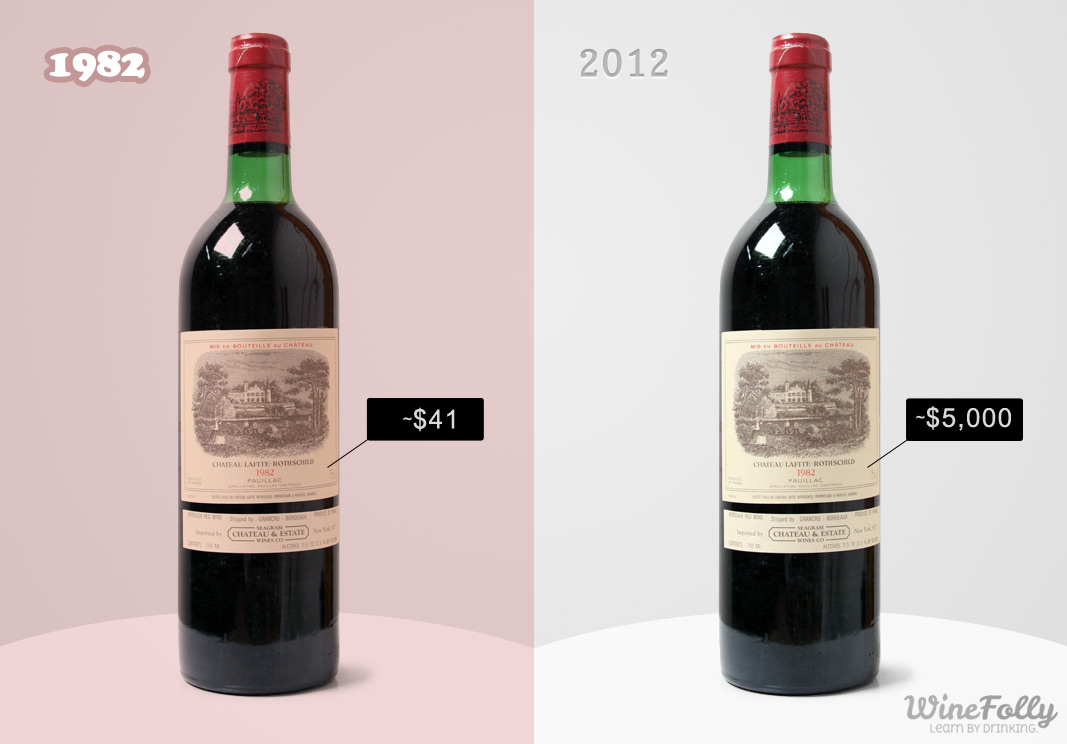Wine (like baseball cards, cars, and artwork) has well documented histories, vintages, and tiered values. This makes them a natural fit for collecting, and rare wines are among the most sought after collectibles on the market. Ready to start a wine collection?

Why Some Wines Command High Prices
In 2010, 3 bottles of 1869 Chateau Lafite-Rothschild sold for $230,000 a bottle.
Like many high-end collectibles, prices can seem outrageous to outsiders and a sub-economy of the super-rare can take center stage. In 2011, 2 bottles of champagne salvaged from a 170 year old shipwreck were auctioned for $78,400 each, and were reportedly still drinkable due to storage on their sides, in darkness, and under pressure (at the bottom of the sea).
These bottles went for a high price because they were rare, but it was also the stories and documentation that pushed them into the stratosphere.

10 Tips To Take Seriously When Starting a Wine Collection
If you are interested in collecting wine, here are a couple easy steps to start you off on the right track:
1) Have disposable income.
Do not endeavor to collect high value wines if you are struggling to pay your rent.The cost of collecting does not stop at the initial purchase. You need to invest in proper storage, insurance, documentation, security…it can literally cost as much as you are willing to spend.
2) Keep track of what you have.
Hopefully there is some order to your storage. At a minimum, you need to know where each bottle is and how many you have. There is software for this, or you can do it more analogue, but you need to do it. It’s ok to drink, just note that you did so in your paperwork…ideally with detailed tasting notes. You are, after all, a notable wine collector.
3) Invest in a worthy cellar/vault.
Wine–especially old wine–needs to be very delicately handled. Wine likes to be stored in a cool humid environment (55 degrees, 75% RH). Consider this environment if you are planning on making your cellar your basement…you could be introducing a mold problem into your house by having it sit on top of a bunch of moisture. The best cellars are detached, well insulated, and secure. If this seems like too much, store your wines with a reputable storage facility.
4) Initial value matters.
It is highly unlikely that Charles Shaw will ever be a sought-after collectible, unless it’s a bottle that went to Mars or has some other significance. What is valuable, rare, and sought-after now seeds what will be desirable in the future. Is your wine worth cellaring?
5) Save all documentation.
The original purchase receipt, the original auction text, the card of the guy who sold it to you…everything. Additionally, write a detailed description of the bottle including any marks that make yours unique. Keep these documents as you would your valuable wine: safely stored and cataloged. This is super important for all sorts of collecting (in-original-box, for example), but especially in collecting wine.
6) Routinely have your wine collection appraised.
Collector markets can be extremely volatile, so it’s good to have a record over time of what sort of value you are sitting on. Also, accidents happen, so if your cellar burns down and you hope to collect any insurance on your rare goods, they’d better be well documented with recent values attached. Take note of how long wines last and when they peak, check out what makes a wine age-worthy
7) Do not overly handle your wines.
I know you want to show off, but that’s what all that documentation is good for. Let your babies sleep, don’t ship them unless you have too, and keep handsy-folks away from your bottles. If you have recently obtained a very old wine, let it sit for 4-6 weeks before even thinking of drinking it. This stuff is sensitive. Shhhh.
8) Things that are too good to be true probably are.
Wine is one of the easiest collectibles to fake, since old bottles are not nearly as difficult to come by as old bottles full of old wine. Don’t be duped, don’t buy an 1860s vintaged Champagne out of a van, but know a deal when you see it.
We recently finished The Billionaire’s Vinegar, a book on one of the largest scams the wine world has ever seen.
9) Start small.
Your wine collection doesn’t need to start at a blue-chip Sotheby’s auction. Wherever you live there will be wine collector groups, local auctions, and informed individuals that can help you down the path to collecting wine you want. Remember, you’re not impressing anyone.
10) Don’t lose focus on what you like, and don’t buy into the hype.
Trends drive markets, but you are collecting wine because you have a particular passion. Do not get the two confused. Buy, store, and drink what you like. A trend can guide you toward a possible investment, but ALWAYS buy what you want.
Read more about curating your wine cellar.
